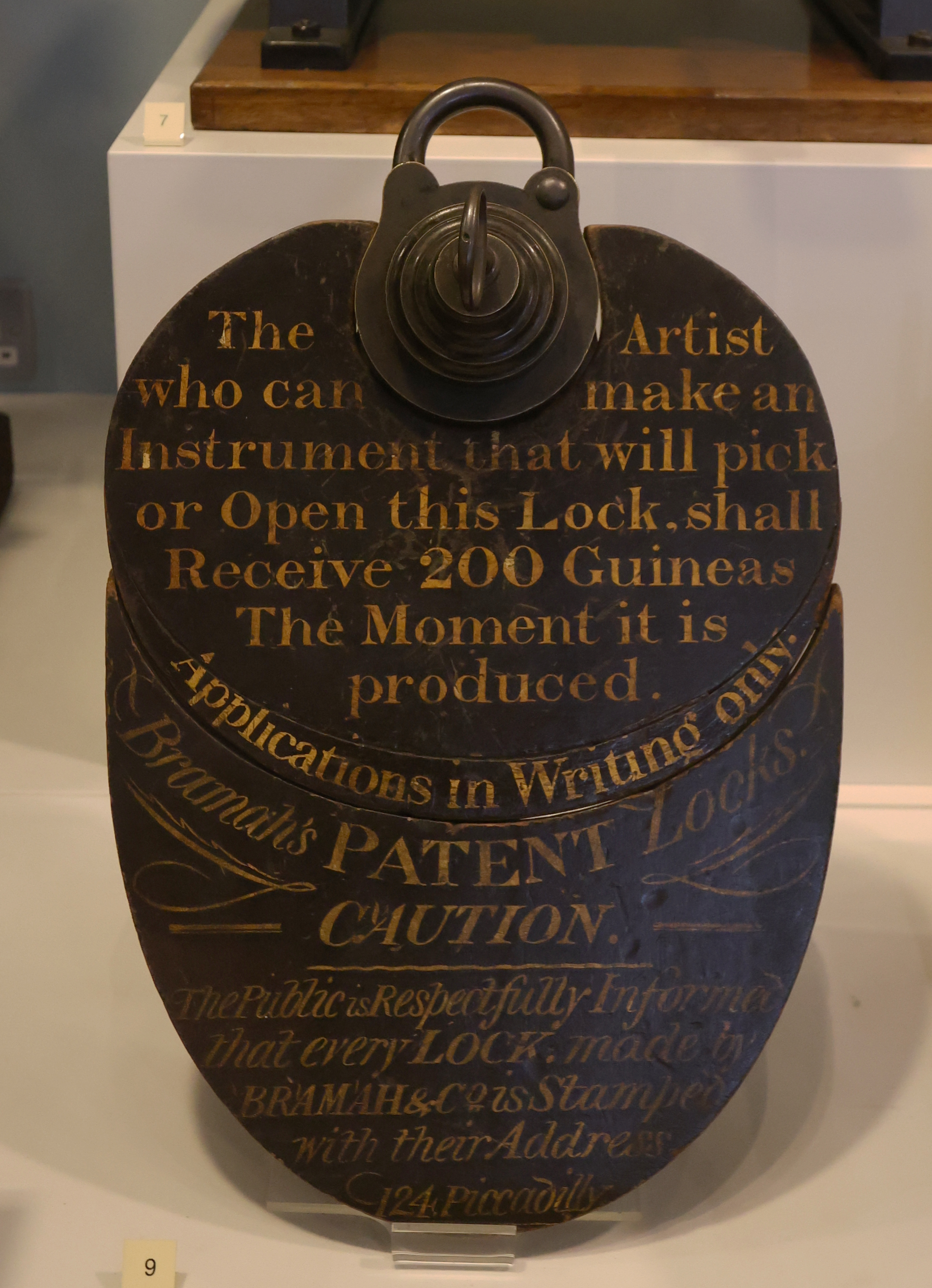Bramah Lock on:
[Wikipedia]
[Google]
[Amazon]
 The Bramah lock was created by
The Bramah lock was created by
Joseph Bramah
Joseph Bramah (13 April 1748 – 9 December 1814) was an English inventor and locksmith. He is best known for having improved the flush toilet and inventing the hydraulic press. Along with William Armstrong, 1st Baron Armstrong, he can be cons ...
in 1784. The lock employed the first known high-security design.
History
After attending some lectures on technical aspects oflock
Lock(s) or Locked may refer to:
Common meanings
*Lock and key, a mechanical device used to secure items of importance
*Lock (water navigation), a device for boats to transit between different levels of water, as in a canal
Arts and entertainme ...
s, Bramah designed a lock of his own, receiving a patent for it in 1784. In the same year he started the Bramah Locks company at 124 Piccadilly, London.
The locks produced by his company were famed for their resistance to lock picking
Lock picking is the practice of unlocking a Lock (security device), lock by manipulating the components of the lock device without the original key.
Although lock-picking can be associated with Intention (criminal law), criminal intent, it ...
and tampering, and the company famously had a "challenge lock" displayed in the window of their London shop from 1790, mounted on a board containing the inscription:
The challenge stood for over 67 years until, at the Great Exhibition
The Great Exhibition of the Works of Industry of All Nations, also known as the Great Exhibition or the Crystal Palace Exhibition (in reference to the temporary structure in which it was held), was an international exhibition that took ...
of 1851, the American locksmith Alfred Charles Hobbs was able to open the lock and, following some argument about the circumstances under which he had opened it, was awarded the prize. Hobbs' attempt required about 51 hours, spread over 16 days.
The Challenge Lock is in the Science Museum
A science museum is a museum devoted primarily to science. Older science museums tended to concentrate on static displays of objects related to natural history, paleontology, geology, Industry (manufacturing), industry and Outline of industrial ...
in London
London is the Capital city, capital and List of urban areas in the United Kingdom, largest city of both England and the United Kingdom, with a population of in . London metropolitan area, Its wider metropolitan area is the largest in Wester ...
. An examination of the lock shows that it has been rebuilt since Hobbs picked it. Originally it had 18 iron slides and 1 central spring; it now has 13 steel slides, each with its own spring.
Bramah received a second patent for a lock design in 1798.Skempton (2002), p.70
Design
The Bramah lock used a cylindrical key and keyhole, as does the current lock. The end of the key has a number of slots of different depths which, when inserted into the lock and pressed against spring tension, would depress a number of wafers to a specified depth and enable the key to turn and open the lock. The original shared some similarities with a modern tubular pin tumbler lock, but used fixed wafers instead of two-part pins. The original Bramah lock had 18 different wafers, which allowed for 470 million possible permutations. The lock's innovative design presented a unique engineering challenge to create tools capable of making the different parts involved. Bramah worked extensively with an engineer namedHenry Maudslay
Henry Maudslay ( pronunciation and spelling) (22 August 1771 – 14 February 1831) was an English machine tool innovator, tool and die maker, and inventor. He is considered a founding father of machine tool technology. His inventions were a ...
to create a number of different machine tools
A machine tool is a machine for handling or machining metal or other rigid materials, usually by cutting, boring, grinding, shearing, or other forms of deformations. Machine tools employ some sort of tool that does the cutting or shaping. All ...
for working with the cylindrical key and lock.
Location
The Bramah company is currently based in Fitzrovia, London and Romford, Essex. Though no longer thought to be completely unpickable, the venerable design is still sold as a very secure lock.References
Bibliography
* {{Locksmithing Locksmithing Door furniture Locks (security device)